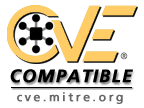Execution with Unnecessary Privileges |
| Weakness ID: 250 (Weakness Class) | Status: Draft |
Description Summary
Extended Description
New weaknesses can be exposed because running with extra privileges, such as root or Administrator, can disable the normal security checks being performed by the operating system or surrounding environment. Other pre-existing weaknesses can turn into security vulnerabilities if they occur while operating at raised privileges.
Privilege management functions can behave in some less-than-obvious ways, and they have different quirks on different platforms. These inconsistencies are particularly pronounced if you are transitioning from one non-root user to another. Signal handlers and spawned processes run at the privilege of the owning process, so if a process is running as root when a signal fires or a sub-process is executed, the signal handler or sub-process will operate with root privileges.
| If an application has this design problem, then it can be easier for the developer to make implementation-related errors such as CWE-271 (Privilege Dropping / Lowering Errors). In addition, the consequences of Privilege Chaining (CWE-268) can become more severe. |
| Scope | Effect |
|---|---|
Confidentiality Integrity Availability | An attacker will be able to gain access to any resources that are allowed by the extra privileges. Common results include executing code, disabling services, and reading restricted data. |
Manual Analysis This weakness can be detected using tools and techniques that require manual (human) analysis, such as penetration testing, threat modeling, and interactive tools that allow the tester to record and modify an active session. These may be more effective than strictly automated techniques. This is especially the case with weaknesses that are related to design and business rules. |
| Reference | Description |
|---|---|
| CVE-2007-4217 | FTP client program on a certain OS runs with setuid privileges and has a buffer overflow. Most clients do not need extra privileges, so an overflow is not a vulnerability for those clients. |
| CVE-2008-1877 | Program runs with privileges and calls another program with the same privileges, which allows read of arbitrary files. |
| CVE-2007-5159 | OS incorrectly installs a program with setuid privileges, allowing users to gain privileges. |
| CVE-2008-4638 | Composite: application running with high privileges allows user to specify a restricted file to process, which generates a parsing error that leaks the contents of the file. |
| CVE-2008-0162 | Program does not drop privileges before calling another program, allowing code execution. |
| CVE-2008-0368 | setuid root program allows creation of arbitrary files through command line argument. |
| CVE-2007-3931 | Installation script installs some programs as setuid when they shouldn't be. |
Phase: Implementation Run your code using the least privileges possible. If possible, create isolated accounts with limited privileges that are only used for a single task. That way, a successful attack will not immediately give the attacker access to the rest of the software or its environment. For example, database applications rarely need to run as the database administrator, especially in day-to-day operations. |
Phase: Architecture and Design Identify the functionality that requires additional privileges, such as access to privileged operating system resources. Wrap and centralize this functionality if possible, and isolate the privileged code as much as possible from other code. Raise your privileges as late as possible, and drop them as soon as possible (to avoid (CWE-271). Avoid weaknesses such as CWE-288 and CWE-420 by protecting all possible communication channels that could interact with your privileged code, such as a secondary socket that you only intend to be accessed by administrators. |
Phase: Implementation Perform extensive input validation for any privileged code that must be exposed to the user and reject anything that does not fit your strict requirements. |
Phase: Implementation When you drop privileges, ensure that you have dropped them successfully to avoid CWE-273. As protection mechanisms in the environment get stronger, privilege-dropping calls may fail even if it seems like they would always succeed. |
Phase: Implementation If circumstances force you to run with extra privileges, then determine the minimum access level necessary. First identify the different permissions that the software and its users will need to perform their actions, such as file read and write permissions, network socket permissions, and so forth. Then explicitly allow those actions while denying all else. Perform extensive input validation and canonicalization to minimize the chances of introducing a separate vulnerability. This mitigation is much more prone to error than dropping the privileges in the first place. |
Phase: Testing Use monitoring tools that examine the software's process as it interacts with the operating system and the network. This technique is useful in cases when source code is unavailable, if the software was not developed by you, or if you want to verify that the build phase did not introduce any new weaknesses. Examples include debuggers that directly attach to the running process; system-call tracing utilities such as truss (Solaris) and strace (Linux); system activity monitors such as FileMon, RegMon, Process Monitor, and other Sysinternals utilities (Windows); and sniffers and protocol analyzers that monitor network traffic. Attach the monitor to the process and perform a login. Look for library functions and system calls that indicate when privileges are being raised or dropped. Look for accesses of resources that are restricted to normal users. Note that this technique is only useful for privilege issues related to system resources. It is not likely to detect application-level business rules that are related to privileges, such as if a blog system allows a user to delete a blog entry without first checking that the user has administrator privileges. |
Phases: Testing; System Configuration Ensure that your software runs properly under the Federal Desktop Core Configuration (FDCC) or an equivalent hardening configuration guide, which many organizations use to limit the attack surface and potential risk of deployed software. |
| Nature | Type | ID | Name | View(s) this relationship pertains to |
|---|---|---|---|---|
| ChildOf |  Weakness Class Weakness Class | 227 | Failure to Fulfill API Contract ('API Abuse') | Development Concepts (primary)699 Seven Pernicious Kingdoms (primary)700 |
| ChildOf |  Category Category | 264 | Permissions, Privileges, and Access Controls | Development Concepts699 |
| ChildOf |  Weakness Base Weakness Base | 269 | Improper Privilege Management | Research Concepts1000 |
| ChildOf |  Weakness Class Weakness Class | 657 | Violation of Secure Design Principles | Development Concepts699 Research Concepts (primary)1000 |
| ChildOf |  Category Category | 753 | 2009 Top 25 - Porous Defenses | Weaknesses in the 2009 CWE/SANS Top 25 Most Dangerous Programming Errors (primary)750 |
| PeerOf |  Category Category | 265 | Privilege / Sandbox Issues | Research Concepts1000 |
| PeerOf |  Weakness Class Weakness Class | 271 | Privilege Dropping / Lowering Errors | Research Concepts1000 |
| There is a close association with CWE-653 (Insufficient Separation of Privileges). CWE-653 is about providing separate components for each privilege; CWE-250 is about ensuring that each component has the least amount of privileges possible. |
| Mapped Taxonomy Name | Node ID | Fit | Mapped Node Name |
|---|---|---|---|
| 7 Pernicious Kingdoms | Often Misused: Privilege Management |
| Jerome H. Saltzer and Michael D. Schroeder. "The Protection of Information in Computer Systems". Proceedings of the IEEE 63. September, 1975. <http://web.mit.edu/Saltzer/www/publications/protection/>. |
| Sean Barnum and Michael Gegick. "Least Privilege". 2005-09-14. <https://buildsecurityin.us-cert.gov/daisy/bsi/articles/knowledge/principles/351.html>. |
| [REF-11] M. Howard and D. LeBlanc. "Writing Secure Code". Chapter 7, "Running with Least Privilege" Page 207. 2nd Edition. Microsoft. 2002. |
| CWE-271, CWE-272, and CWE-250 are all closely related and possibly overlapping. CWE-271 is probably better suited as a category. Both CWE-272 and CWE-250 are in active use by the community. The "least privilege" phrase has multiple interpretations. |
| Submissions | ||||
|---|---|---|---|---|
| Submission Date | Submitter | Organization | Source | |
| 7 Pernicious Kingdoms | Externally Mined | |||
| Modifications | ||||
| Modification Date | Modifier | Organization | Source | |
| 2008-09-08 | CWE Content Team | MITRE | Internal | |
| updated Description, Modes of Introduction, Relationships, Other Notes, Relationship Notes, Taxonomy Mappings | ||||
| 2008-10-14 | CWE Content Team | MITRE | Internal | |
| updated Description, Maintenance Notes | ||||
| 2009-01-12 | CWE Content Team | MITRE | Internal | |
| updated Common Consequences, Description, Likelihood of Exploit, Maintenance Notes, Name, Observed Examples, Other Notes, Potential Mitigations, Relationships, Time of Introduction | ||||
| 2009-03-10 | CWE Content Team | MITRE | Internal | |
| updated Potential Mitigations | ||||
| 2009-05-27 | CWE Content Team | MITRE | Internal | |
| updated Related Attack Patterns | ||||
| Previous Entry Names | ||||
| Change Date | Previous Entry Name | |||
| 2008-01-30 | Often Misused: Privilege Management | |||
| 2009-01-12 | Design Principle Violation: Failure to Use Least Privilege | |||





